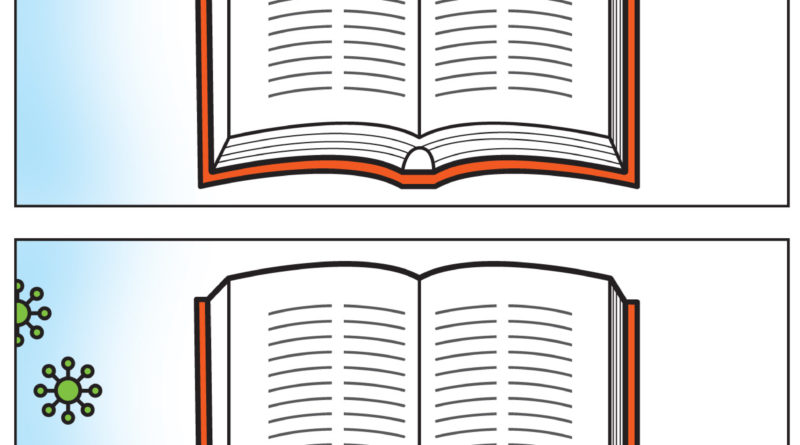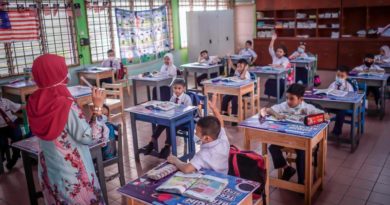COVID-19 SPECIAL: HOME FRONT- Some parents want schools closed during Covid-19 pandemic. But what are the downsides?
Some parents want schools closed during the Covid-19 pandemic. But closing schools carries a cost to society, with parents needing to arrange alternative care for their children and disadvantaged students losing out. It is not a decision to be taken lightly.
Yesterday, over 200,000 primary school pupils stayed home for e-learning, as their teachers took them through a combination of e-lessons, worksheets and other forms of homework.
Today, it will be the turn of some 150,000 secondary school students to do four to five hours of home-based learning, and tomorrow, students in junior colleges and centralised institutes will follow suit.
But even as teachers, their young charges and parents try out home-based learning on a mass scale, many are asking why the Government has not closed down schools as part of the efforts to fight the coronavirus outbreak here.
After all, such steps have been taken in several countries, including Japan and New Zealand, to contain the spread of the virus.
One mother of two primary school-going children echoed the views of many other parents when she said: “We have put in place several measures to combat the outbreak, including social distancing. No more CCAs (co-curricular activities) and tuition at private centres.
“Surely it makes sense for schools to close. After all, it’s quite difficult for young children to practise social distancing. And what about all those kids going to and from school in school and public buses and the MRT?”
While such views resonate with some parents, one needs to look at the data and consider if closing schools will make a difference to infection rates. The benefits need to be weighed against costs, including the social and economic ones.
.
 Ads by: Memento Maxima Digital Marketing
Ads by: Memento Maxima Digital Marketing
@ [email protected]
– SPACE RESERVE FOR YOUR ADVERTISEMENT
.
ARE SCHOOLS HOT SPOTS?
But are schools infection hot spots in the first place?
While there are still many unknowns about the disease, the data gathered so far gives useful insights. Official data shows that as of Monday, 51 students have come down with Covid-19, the respiratory illness caused by the coronavirus. Of these, five are children in pre-schools, four in secondary schools, and 42 in polytechnics, universities and the Institute of Technical Education.

But none was infected in his or her pre-school , school, or in institutes of higher learning (IHLs).
Most of the younger students were infected by adults they had come into contact with at home, including parents. The majority of the 42 in the IHLs, including universities, caught the virus overseas.
The low number of children among the infected is consistent with the insights given by experts such as Professor Dale Fisher, chair of the World Health Organisation’s Global Outbreak Alert and Response Network.
Researchers who studied 45,000 confirmed cases in China found that less than 1 per cent were children aged nine and under, while around 1.2 per cent were children and teens, aged between 10 and 19 years old.
Based on the data, researchers said children appeared to be less hard hit by the disease. The data, published in late February in the Journal of the American Medical Association, stated that none of the children under nine died, and only one of the older children died.
Several experts have surmised from China’s experience that children do not experience severe illness from or contribute much to the spread of Covid-19.
Locally, anxious parents will bring up the PCF Sparkletots cluster as evidence of school spread. But of the 26 confirmed cases in the cluster, 16 are staff, while 10 are family members of some of the infected staff, including four children who contracted the virus from infected adults at home.
While schools must take precautions to keep premises clean and infection-free, the fact is there are no cases of Covid-19 being spread among students in schools as yet.
So no, schools are not infection hot spots, and students are not a high-risk group in this pandemic.
.
 Ads by: Memento Maxima Digital Marketing
Ads by: Memento Maxima Digital Marketing
@ [email protected]
– SPACE RESERVE FOR YOUR ADVERTISEMENT
.
THE COSTS OF CLOSING SCHOOLS
There are also downsides to closing schools.
For one thing, students freed from school may end up going out to mingle with a lot more people, exposing themselves to the risk of infection. As Education Minister Ong Ye Kung reasoned, it may not be a bad idea for children to spend the bulk of their day in school, where lessons and activities are arranged such that they mingle only with their classmates, who are less susceptible to the virus than adults.
This is supported by a recently released study done in Singapore that shows that workplace and social distancing may be more effective in reducing the spread of Covid-19 than school closures. Researchers writing in The Lancet noted that a “continually high” percentage of infections occurred in the workplace, in part because people still went to work when unwell. Adults spread the virus to co-workers, who then bring it home. Hence, quarantine, working from home and social distancing should be the focus over school closures.
Schools, on the other hand, have been quick to impose stringent measures such as temperature-taking and made their staff and students practise social distancing. For one thing, pupils in Primary 3 now have “fixed exam-style seating” where they sit farther apart and in assigned seats and not move around, while Primary 1 and 2 pupils, as well as kindergarten children, will have fixed group cluster seating.
The United States Centres for Disease Control and Prevention (CDC), a leading authority on infectious diseases, also leans towards keeping schools open, especially when there is no widespread community transmission. The CDC’s advice is that if there are school-based cases of Covid-19, schools must close for decontamination and contact tracing.
.
 Ads by: Memento Maxima Digital Marketing
Ads by: Memento Maxima Digital Marketing
@ [email protected]
– SPACE RESERVE FOR YOUR ADVERTISEMENT
.
Beyond such targeted closures, the CDC’s view is that many of the two-to six-week closures announced by hundreds of school districts in the US would not curb the virus. Longer closures of eight to 20 weeks might help curb transmission – but possibly only as much as regular hand washing by students, it said.
But science-based evidence aside, policymakers and educators have another important consideration – the huge societal costs of closing schools, particularly if students continue to go out, or are cared for by grandparents and others who are vulnerable.
Policymakers have to consider how closing schools will cause disruptions for families who have to make alternative childcare arrangements – take leave, work from home or work part-time – and the impact that will have on the economy. One also needs to consider parents in essential service jobs, such as healthcare and transport.
One study done by Colorado State and Yale researchers, released recently, estimated that in the US, 15 per cent of healthcare providers have children but do not have another family member in their household to provide childcare when schools close. If schools close, this group may have to stop work. A shortage of healthcare workers compromises the care given to patients, and may lead to more deaths than school closures can prevent.
“School closures come with many trade-offs,” wrote the researchers, Dr Jude Bayham and Dr Eli Fenichel. “The results suggest that it is unclear if the potential contagion prevention from school closures justifies the potential loss of healthcare workers.”
Just as important is the long-term impact of school closures on disadvantaged children.

Parents who have flexible work schedules, employ domestic helpers, are digitally connected and can afford private tutors for their children may think closing schools is the less costly and less risky option. They may thus see keeping schools open as an indefensible gamble.
But thousands of other parents worry about finding alternative childcare arrangements and having to ask their employers to rearrange their work schedules. They are parents in service jobs, or those who are daily rated or paid by the hour. Some have just 10 days of annual leave. They worry if asking for more leave will lead to them losing their jobs. The financial hit can be devastating.
And then there are students who lack a conducive home environment for e-learning. A staff member from a student care centre was deeply concerned about the many students in her centre who depend on the centre for meals and guidance to do their homework as their parents work shifts and are unable to help them with their homework.
.
 Ads by: Memento Maxima Digital Marketing
Ads by: Memento Maxima Digital Marketing
@ [email protected]
– SPACE RESERVE FOR YOUR ADVERTISEMENT
.
Figures show that currently, 27,000 primary school pupils are enrolled in school-based student care centres. These centres serve students from all backgrounds, with priority given to those without after-school care arrangements at home. About one-fifth of students (more than 5,000) enrolled are under MOE’s Financial Assistance Scheme.
In any case, online learning is not optimal compared with the learning that happens in a classroom. Studies show that students, especially those with weaker academic backgrounds, fare less well when they work online.
.
 Ads by: Memento Maxima Digital Marketing
Ads by: Memento Maxima Digital Marketing
@ [email protected]
– SPACE RESERVE FOR YOUR ADVERTISEMENT
.
COMMUNITY SPREAD
While closing down schools will cause inconvenience across society, it is an option that has not been ruled out totally.
Singapore’s multi-ministerial task force to combat the virus has put in place stricter measures over the last few weeks, and said tougher action will be introduced when needed, including shuttering schools.
The last time this happened was from March 27 to April 6, 2003, soon after the severe acute respiratory syndrome (Sars) left two men dead on March 26 in Singapore. The unprecedented move for schools to shut was to calm parents. The Education and Health ministries, though, said: “On purely medical grounds, there are currently no strong reasons for closing all schools.” To make up for the loss of curriculum time then, schools had to compensate by having a shorter June mid-year break.
Should it become necessary this time, school closures would likely take place alongside workplace closures, as many parents would have to look after their children.
Covid-19 is a new disease and governments worldwide are trying to find ways to control its spread while ensuring the economy does not come to a standstill.
The measures that Singapore has taken to fight the virus are carefully considered and calibrated responses to an evolving situation.
.
 Ads by: Memento Maxima Digital Marketing
Ads by: Memento Maxima Digital Marketing
@ [email protected]
– SPACE RESERVE FOR YOUR ADVERTISEMENT
.
Singapore has not adopted the more drastic options of ordering a shutdown of all except essential businesses, or ordering a lockdown to keep people indoors except for trips to get food and medicine. In similar fashion, it has not shut schools.
Instead, it has curbed infection spread upstream by ring-fencing those diagnosed through rigorous tracing of their contacts and quarantining those contacts. This has kept community transmission in check.
But in the last week or so, the number of local infections not linked to existing clusters has risen sharply.
From March 19 to 31, the total number of unlinked cases surged from 23 to 103. There were 1,000 infection cases as of yesterday. The figures suggest rising community transmission.
So while schools remain open for now, there is no saying if they may be closed in the days ahead.
Meanwhile, what is needed now is for parents and the public to understand that closing schools entails costs to society and students, and is not a decision to be taken lightly.
.
 Ads by: Memento Maxima Digital Marketing
Ads by: Memento Maxima Digital Marketing
@ [email protected]
– SPACE RESERVE FOR YOUR ADVERTISEMENT
.
-
Coronavirus: Stay informed and safe
- The world now faces an unprecedented crisis because of the Covid-19 outbreak.To help our readers stay informed on the latest health, economic and social developments related to the outbreak, we are making our news reports and analyses by our correspondents freely available to all.You can also sign up for our free newsletter on the coronavirus outbreak.
We thank all of our readers for your support.
Should you wish to sign up for a subscription, that would be a great help to enable us in the newsroom to continue serving you in these difficult times.
Warren Fernandez
Editor-in-Chief
The Straits Times
.
 Ads by: Memento Maxima Digital Marketing
Ads by: Memento Maxima Digital Marketing
@ [email protected]
– SPACE RESERVE FOR YOUR ADVERTISEMENT
.










